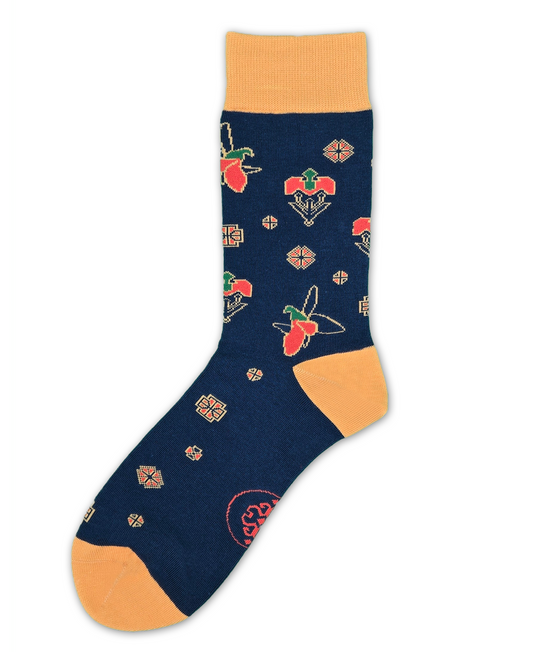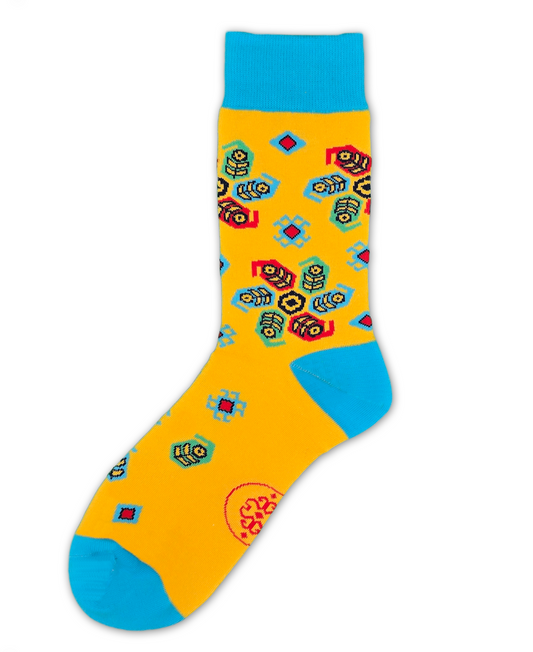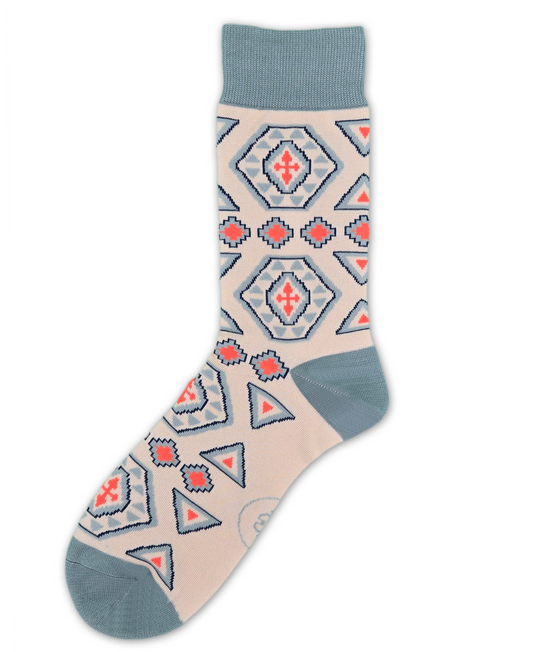
Wearing a Story: The Hidden Messages of Eastern Symbols on Socks
Share
Since ancient times, people have sought warmth, food, and safety — yet even in meeting basic needs, humanity has always pursued beauty. From the first spun threads to intricate handwoven textiles, fabric became more than protection: it became a language of culture and identity.
In the East, artisans turned patterns into poetry — symbols of origin, belief, and wisdom woven into every motif. These timeless designs inspire JorabChic’s heritage collection, where each pair of socks carries the story of Eastern ornaments into modern life.
So we invite you to explore the meanings and messages woven into every motif and colour of our Heritage Collection — where tradition meets contemporary design.
Collection Piece: Buta
Key Motif: Buta (also known as boteh or paisley)
Symbolism: warmth, protection, life energy, continuity

Buta is one of the most iconic symbols in Eastern decorative art. Its curved silhouette resembles a flickering flame and traces back to a shrub whose burning branches gave off a steady, lasting fire, with embers that stayed warm for hours — keeping homes and families cozy.
This fiery symbol is deeply woven into the traditions of carpet weaving, metalwork, and ceramics among fire-worshipping cultures. It represents warmth, protection, vital energy, and the continuity of life.

On our socks, Buta symbolizes inner light — the kind of fire that never fades, even in the coldest of places. It embodies the warmth you carry within and share with those around you.
Collection Piece: Karabakh
Key Motif: Khari Bulbul (translated as “Nightingale Orchid”)
Symbolism: love, self-sacrifice, transformation

These socks feature one of the rarest flowers from the orchid family — the Khari Bulbul. It grows only in specific regions, which is why the socks are named Karabakh, after one of the few areas where this flower blooms.
Its petals shimmer with purple, green, and yellow hues, and its shape resembles a bird — hence the name: “nightingale.”

According to legend, a nightingale once fell in love with the flower. When a bee tried to take its nectar, the bird protected it with its body. The bee stung the bird, but it did not die — instead, the bee and the bird transformed into the flower itself. Thus, the Khari Bulbul became a symbol of love, self-sacrifice, and transformation.
The Karabakh socks, adorned with this motif, embody the power to love, to change, and to overcome challenges.
Collection Piece: Nar
Key Motif: Nar (Pomegranate)
Symbolism: prosperity, wholeness, integrity, legacy, resilience

Since ancient times, the pomegranate has been revered as a symbol of love, fertility, and wholeness. In Eastern and Mediterranean cultures, it represents unbreakable bonds between people, generational continuity, and the power of legacy.
To give someone a pomegranate in the East was a declaration of love, a sign of respect, and a wish for prosperity. It was more than a fruit — it was a talisman, a blessing.
The pomegranate tree can thrive in dry, barren soils, withstanding intense sun and lack of water. That resilience makes it a natural symbol of inner strength, the ability to grow and bear fruit even in the harshest conditions.

On our socks, the pomegranate represents determination, growth, and the strength to bloom in spite of obstacles. It's a symbol of love for life, respect for your roots, and belief in your own path.
Collection Piece: Pakhlava
Key Motif: Kilim Flower
Symbolism: peace, empathy, diversity

A poetic and delicate motif in Eastern ornamentation, the Kilim Flower symbolizes beauty, new beginnings, nature, and renewal. Its stylized petals were often woven into traditional carpet designs, echoing spring blossoms and life’s cyclical nature.


The Kilim Flower motif also bears a distant resemblance to the layered geometry of the Eastern delicacy, pakhlava — a dessert crafted from delicate layers of pastry, spices, and textures that blend in perfect harmony.

Here, this variety and balance symbolize peace, empathy, and compassion — a reminder that diversity can be sweet, and harmony can be beautiful.
Conclusion
Each ornament on your socks is more than just a design — it's a delicate bridge to history, woven from threads of tradition and symbolism. They carry ancestral wisdom, familial warmth, the strength of nature, and meanings that inspire, delight, and connect.
We believe that clothing is another way to tell your story — a way to express yourself in a world where threads can speak and fashion can reflect heritage.
May every step you take in our socks be a step toward new stories, brighter days, and heartfelt smiles.














